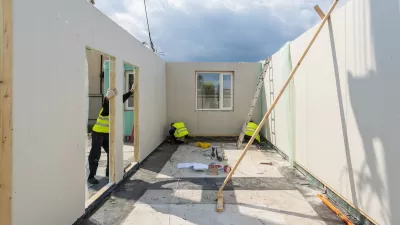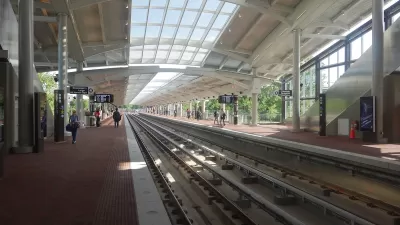Urban infill housing is becoming a major part of business for large homebuilders, even those building modular homes.
Builders are focusing on infill as a new area for modular homes, which have been coming down in size in recent years.
"In fact, over the past seven years, modular has risen above 3% of the total only once, at 3.6% in 2009 (see chart below). In markets where tract building dominates or where labor is cheap, modular "doesn't make sense for a lot of builders," observes Dan Goodin, vice president of sales and marketing for Nationwide Homes, which has been producing modular homes in Martinsville, Va., for 52 years.
Still, Goodin remains convinced that housing trends and buyer demand are shifting toward a greater acceptance of modular, particularly for rural scattered lots (where it would otherwise be expensive to send subcontractors over long stretches to complete a stick-built house) and urban infill, where the speed at which factory-built homes can be assembled at jobsites is less disruptive to the surrounding neighborhood."
FULL STORY: Urban Infill Could Be Key to Boosting Modular’s Meager Market Share

Maui's Vacation Rental Debate Turns Ugly
Verbal attacks, misinformation campaigns and fistfights plague a high-stakes debate to convert thousands of vacation rentals into long-term housing.

Planetizen Federal Action Tracker
A weekly monitor of how Trump’s orders and actions are impacting planners and planning in America.

San Francisco Suspends Traffic Calming Amidst Record Deaths
Citing “a challenging fiscal landscape,” the city will cease the program on the heels of 42 traffic deaths, including 24 pedestrians.

Defunct Pittsburgh Power Plant to Become Residential Tower
A decommissioned steam heat plant will be redeveloped into almost 100 affordable housing units.

Trump Prompts Restructuring of Transportation Research Board in “Unprecedented Overreach”
The TRB has eliminated more than half of its committees including those focused on climate, equity, and cities.

Amtrak Rolls Out New Orleans to Alabama “Mardi Gras” Train
The new service will operate morning and evening departures between Mobile and New Orleans.
Urban Design for Planners 1: Software Tools
This six-course series explores essential urban design concepts using open source software and equips planners with the tools they need to participate fully in the urban design process.
Planning for Universal Design
Learn the tools for implementing Universal Design in planning regulations.
Heyer Gruel & Associates PA
JM Goldson LLC
Custer County Colorado
City of Camden Redevelopment Agency
City of Astoria
Transportation Research & Education Center (TREC) at Portland State University
Jefferson Parish Government
Camden Redevelopment Agency
City of Claremont





























